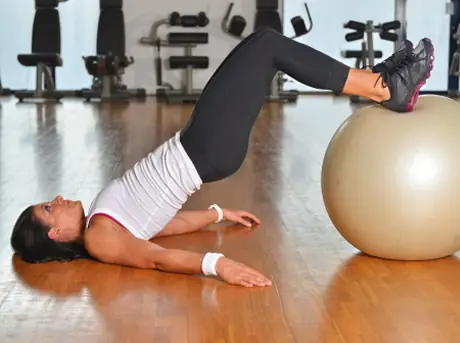
It usually happens at the worst time. You're in a race and all of a sudden, a muscle locks up. And if it's bad enough, it could mean the end of your day on the bike.
For some, muscle cramps are a common and often occur in the same muscle group. This is a result of a muscular imbalance in the legs—some muscles are stronger than others, and when the weaker muscles fatigue, muscle cramping can occur.
For example, if you have strong quadriceps and relatively weak hamstrings, your hamstrings will fatigue first and become more prone to cramping. If you have relatively weak calf muscles, they'll be the most likely to cramp first.
More: 5 Ways to Prevent Muscle Cramps in a Cycling Race
In order to prevent muscular imbalances and muscle cramping, it's important to find out where the imbalance is and concentrate your strengthening exercises to focus on those muscles. The muscles outlined below are the specific muscles used when cycling and the exercises to strengthen each muscle group.
Muscle Groups
The muscles below are those that are used most often when pedaling a bicycle. Every cyclist is different, so any one (or more) of these muscle groups may be weak depending on the individual.
1. Quadriceps: The quadriceps are the fleshy muscles on the front of your thigh. They straighten the knee and provide power through the first 90 degrees of the pedal stroke. The quadriceps are commonly overdeveloped in cyclists, which can lead to muscle imbalances and cramping in the other muscles of the leg.
2. Gluteals: The gluteals are the big muscles in your butt. They straighten the hip and provide power through the first 90 degrees of the pedal stroke.
More: Weight-Room Workouts for Cyclists
3. Gastrocnemius: The gastrocnemius is the large fleshy muscle that runs from behind your knee to the Achilles tendon. It provides power from 45 degrees to 135 degrees of the pedal stroke.
4. Hamstrings: The hamstrings run from the bottom of the gluteal muscles on the back of the thigh and end just below the knee. This muscle group provides power as you pull your foot through the bottom of the pedal stroke (six o'clock).
5. Adductor: The adductor muscles run from your groin along the inside of the thigh and insert behind the knee. They keep your knee from tracking outward as you pedal.
6. Abductor: The abductor muscles run from your hip and butt along the outside of the thigh and keep your knee from drifting inward during the pedal stroke. If you have weak abductors, your knee may occasionally hit the top tube when you pedal.
- 1
- of
- 3
About the Author









Discuss This Article